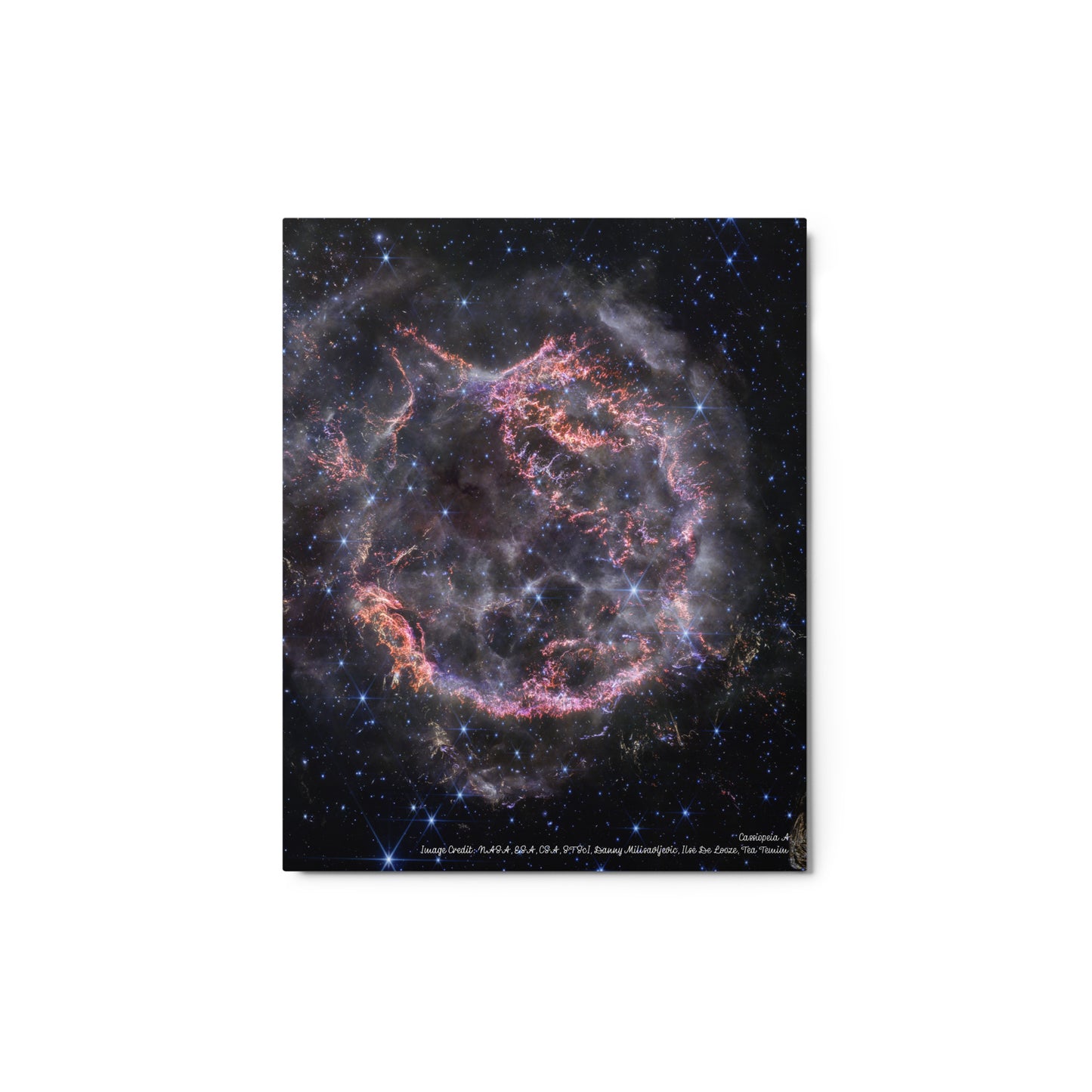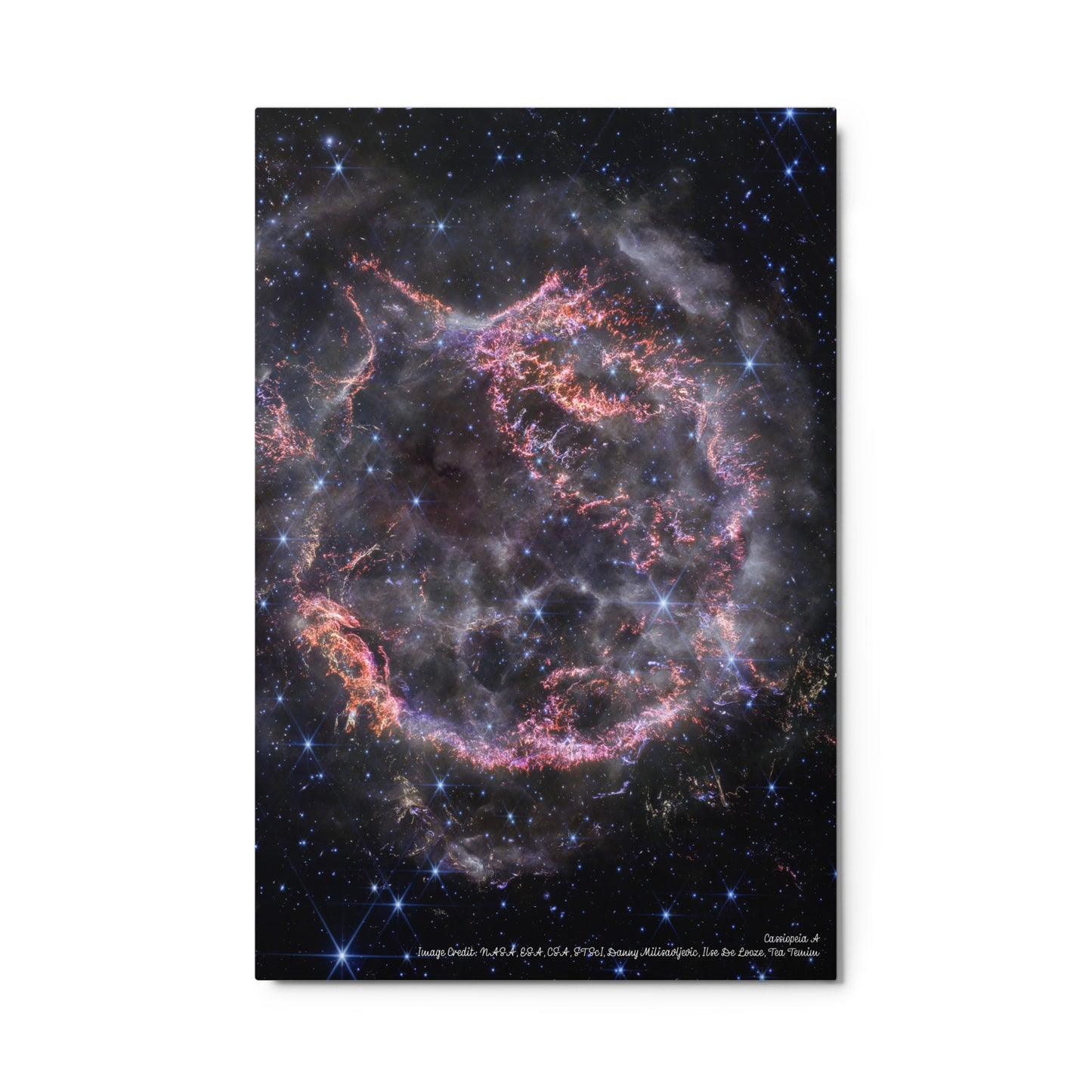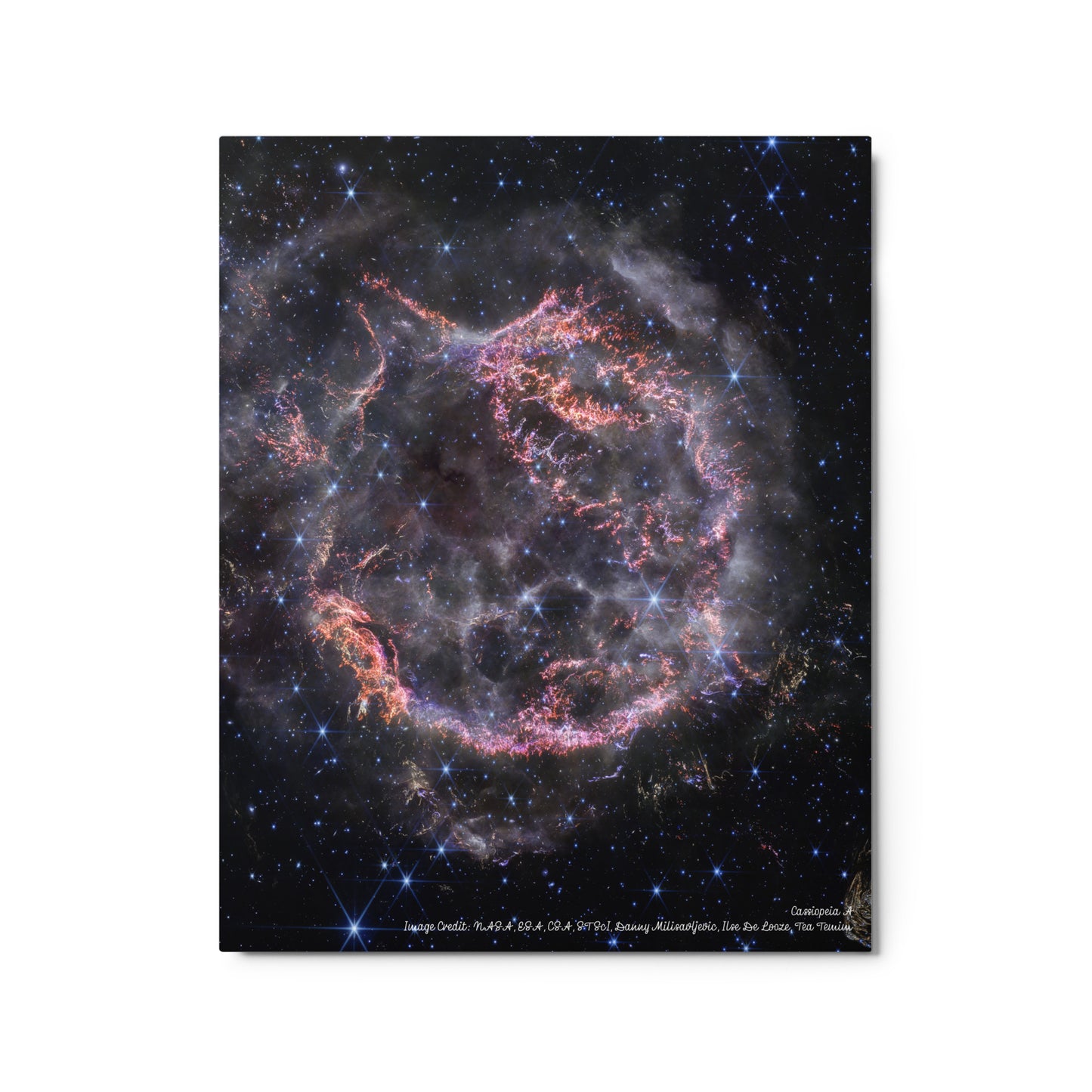Cassiopia A, Metal prints
Cassiopia A, Metal prints
Couldn't load pickup availability
Bring the Universe Home: High-Quality Metal Prints
Transform your space with stunning cosmic wonders. These high-quality metal prints showcase the universe's vibrant colors and intricate details in a way that has never been seen before.
Lasting Visions of the Cosmos:
Scratch- and Fade-Resistant: Crafted with a durable aluminum surface, these prints withstand everyday wear and tear.
Exceptional Vibrancy: The meticulous printing process utilizes the metal's reflective properties to create stunningly vivid colors that bring the cosmos to life.
Easy to Care For: Simply wipe clean with a damp cloth, making them ideal for high-traffic areas.
Multiple Sizes Available: Find the perfect fit for your space, whether you're seeking a captivating focal point or a mesmerizing gallery wall.
Modern Elegance:
These metal prints boast a sleek and contemporary aesthetic, a touch of sophistication. The artwork appears almost luminescent against the wall, adding a unique dimension to your décor.
A new high-definition image from NASA's James Webb Space Telescope's NIRCam (Near-Infrared Camera) unveils intricate details of supernova remnant Cassiopeia A (Cas A). It shows the expanding shell of material slamming into the gas shed by the star before it exploded.
The most noticeable colors in Webb's newest image are clumps of bright orange and light pink that make up the inner shell of the supernova remnant. These tiny knots of gas, comprised of sulfur, oxygen, argon, and neon from the star itself, are only detectable by NIRCam's exquisite resolution, and give researchers a hint at how the dying star shattered like glass when it exploded.
The outskirts of the main inner shell look like smoke from a campfire. This marks where material ejected from the exploded star is colliding with surrounding circumstellar material. Researchers say this white color is light from synchrotron radiation, which is generated by charged particles traveling at extremely high speeds spiraling around magnetic field lines.
There are also several light echoes visible in this image, most notably in the bottom right corner. This is where light from the star's long-ago explosion has reached, warming distant dust that is glowing as it cools down.
Constellation: Cassiopeia
Dimensions: Image is about 5.8 arcminutes across (19 light-years)
Distance: 11,090 light-years
Exposure Dates: 05 November 2022
Image Credit: NASA, ESA, CSA, STScI, Danny Milisavljevic (Purdue University), Ilse De Looze (UGhent), Tea Temim (Princeton University)
Share




